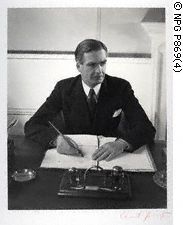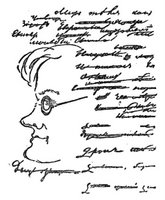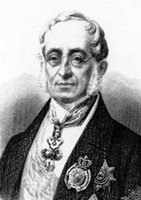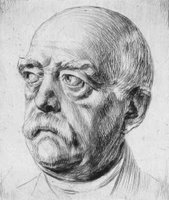FROM CHAOS TO 'OVERMANAGED DEMOCRACY': TRAJECTORIES OF RUSSIAN POLITICAL EVOLUTION
It is commonplace to argue, especially in light of the egregious nonsense written up these days due to the l'affaire Litvinenko, that Russia has fallen back into a faux Sovietskaya Vlast state of affairs. Masha Lipman of the Carnegie Endowment's Moskva Centre is perhaps the leading progenitor of this point of view (see: "Headed for a Fall?" in www.washingtonpost.com). From this point of view, Putin's regime is merely a warmed over version of the late Brezhnev period, except perhaps that the price of oil allows the State to limp along better. Anyone whose has cared to read this journal knows, that I have a less than charitable view of such an analysis. Which is not to gainsay of course the fact that in many ways, the Russsian political scene leaves a great deal to be desired. However, as I argued with a young friend of mine, a Russian emigree, named 'Daria', if one compares where Russia is today, with say various Western European States, in the post-1945 period, than one can see, that once one gets away from an ideal-type view of 'Western Democracy' then one is not nearly as pessimistic about the possibilities of a more positive future evolution in Russian political developments. Assuming (as I do...just, that Parliamentary Democracy is something that all polities should aim at). But, the chief weakness of Tovarish Lipman and her ilk, is that due to outrage (much of it legitimate of course) at the current policies of the regime, informed and objective analysis is often substituted by ideological slogans and emotions.
It is with the above background in mind, that I offer to my readers the following article by Professor Nikolai Petrov (also of Carnegie's Moskva Centre by the bye), which is I think one of the better analyses of both where Russia is presently in terms of its political structure and where it might go in the near future. And, while I do not necessarily agree with all that Professor Petrov says (indeed I violently disagree with some of his analysis), I do think that he offers a much more empiricist and, objective analysis of the current Russian scene, than offered by many of our latter day, Liberal, Westernizers. So, by all means read and enjoy:
The Full Cycle of Political Evolution in Russia From Chaotic to Overmanaged Democracy PONARS Policy Memo No. 413
Nikolay Petrov
Carnegie Moscow Center
December 2006
"In the seven years that President Vladimir Putin has been in power, Russia seems to have regressed politically almost to where it was a decade and a half ago. This is not to say that the Kremlin has been actively fighting against democracy; its decline is a side effect of the strengthening of the state. The rise of democracy in the late 1980s and early 1990s was the result of a weakening of the state, not a strengthening of society. With the state becoming stronger and society still weak, democracy in Russia is also becoming weaker. It is important to understand what of democracy has gone and what, if anything, is still left.
After centralizing political reforms were launched in late 2004, the use of the term “managed democracy” to describe Russia’s current political regime no longer makes sense. Out of the many possible terms to replace it, I suggest overmanaged democracy (OMD). This term does not imply that the regime is to be regarded as essentially democratic. Rather, it implies the genesis of a regime that has evolved from former president Boris Yeltsin’s chaotic proto-democracy to managed democracy to the ultimate and final stage of OMD.
Nearly all democratic institutions have been weakened under Putin’s rule, including parliament, political parties, independent media, and fair elections. Ultimately, in order for OMD to survive as a political system, it must draw on a well-functioning mechanism that provides for direct communication and feedback between authorities and society. However, with a tightly controlled media, an emasculated parliament, suppressed civic initiative and opposition, and manipulated elections, communication is deeply problematic. The government seeks to resolve this by masterminding surrogate mechanisms to replace the democratic ones that have been destroyed or weakened. These ersatz democratic mechanisms include political offices for public grievances (obshchestvennye palata), a dialogue program, secret public opinion polls, and reliance on a mass party of power. In fact, many of the inventions of Putin’s Kremlin are almost exactly identical to institutions and mechanisms that existed in the Soviet Union.
In Russia, a strong, semi-military, mobilization state has traditionally dominated over a much weaker and barely consolidated society. The policy of state strengthening that has been undertaken during Putin’s presidency has largely brought back the familiar Russian pattern: the state is ubiquitous and encroaches upon public territory, pushing out the genuine public initiatives that are not controlled by the state. Having “streamlined” media, business, political parties, and other institutions, the state now attempts to expand its control over civil society.
A more detailed look at three pillars – elections, political parties, and federalism – helps us understand the nature and results of political evolution under Putin.
Elections
Managed democracy under Putin did not appear out of nowhere. Government authorities have sought to control elections in Russia ever since the first relatively free and fair election in 1989 under Mikhail Gorbachev. When competitive elections were still a new phenomenon, the authorities did not yet know how to deal with them, however. The ruling elite was not consolidated enough to provide effective control over elections, and substantial public activism made controlling elections a difficult task. In time, the political elite became much more experienced. Meanwhile, societal disappointment in the election process grew and public activism declined. Although a clear trend to enhance control over elections was visible as early as 1993, the 1996 presidential election is considered the first example of a large-scale managed election in post-Communist Russia. Since that time, Russia has evolved from a democracy that is managed haphazardly from various centers into a system of government managed in an organized way from a single center.
Elections scheduled for 2007-2008 are defined by significant changes in both the mechanism (i.e., increased centralization) and rules of the game. These include 1) reformed electoral commissions, which have been organized into a vertical chain of command; 2) manipulated courts; 3) large-scale use of law enforcement agencies against political opponents; 4) the introduction of a system of presidential envoys and political offices of public grievances; 5) amendments to legislation on political parties; and, finally, 6) a change to a mixed system in regional legislative elections and a purely proportional system in Duma elections.
The electoral reforms conducted by the Kremlin are interrelated. The first wave in 2000-2003 can be described as the first application of managed democracy to elections, tested on a nationwide scale during the 2003-2004 election cycle. These elections demonstrated the extreme inefficiency of the system that was created, however. Rather than reinstitute previously dismantled democratic elements, the Kremlin proceeded to consolidate control. A second set of electoral reforms in 2004-2005 remain to be fully applied in 2007-2008; so far they have only been tested at the local level. These reforms signal the shift from managed democracy to an overmanaged one.
As a result, Russia has revived virtually Soviet-style decorative elections, entirely controlled by authorities and, in most cases, perceived to be of little significance. Unlike in the Soviet past, participation in elections is not obligatory and turnout has dropped.
Political parties
Political parties, prevented from participating in any sort of decisionmaking, serve as an example of how overmanaging democracy can be counterproductive. Political parties have been increasingly turned into electoral projects fully dependent on the Kremlin, which masterminds them and withdraws them from the political scene as it deems necessary. New legislation has introduced forbiddingly high hurdles for political parties. This precludes the emergence of new parties without the direct support of the Kremlin. At the same time, a mechanism for removing existing parties from the political realm has been created and actively applied.
In order to expand control over parties, a combination of both subtler and rougher mechanisms has been used. An example of the former is the liquidation of regional party branches, which has put political parties on the edge of survival and makes them more submissive. An example of the latter is the replacement of party managers through direct pressure, subordination, behind-the-scenes political intrigue, and manipulated judicial procedures. Government officials are not even embarrassed to admit this. The Kremlin has adopted a method of “negative selection”: unacceptable parties are discarded, and the remaining parties are allowed to compete almost freely. Think of a cafeteria, but one in which the appearance of choice masks a menu under complete control.
If under Yeltsin the Kremlin sought to create a system in which two slightly different parties of power would alternate, today’s model is of “one-and-a-half” parties: one major party exists and a few minor, auxiliary ones are controlled by the government. This looks increasingly like the “people’s democracy” once enjoyed by Soviet-bloc countries. The ruling party, United Russia, is a not a party that holds power; it is a party that services the powers-that-be. Strictly speaking, it is not even a political party, but a trade union of bureaucrats. It is a mechanism that relays impulses from the top down and a mechanism to ensure that officials are loyal to the Kremlin. United Russia is increasingly reminiscent of the Communist Party of the Soviet Union (CPSU) of the 1970s and 1980s, with its mass membership, regional party secretaries, and its key function by which becoming a party member constitutes an oath of loyalty.
Federalism
Federalism and democracy are interrelated. The dismantling of one leads to the weakening of the other. What we are seeing in Russia’s federal system is the direct result of the dramatic weakening of democratic institutions and the retreat from open and public politics, including direct gubernatorial elections.
Russian federalism in the early 1990s was the federalism of a weak center rather
than of strong regions. As the center strengthened in the past five years, federalism weakened; by 2005, when the new system of appointing governors was launched, it had almost disappeared. Although some federalist decorations are still in place (such as the upper house of the parliament, the Federation Council), Russia has turned into a unitary and highly centralized state.
The Paradoxes of OMD
The new quasi-military state organization resembles the Soviet state organization, with it multiple vertical chains of command and direct subordination to the highest level of power; an antisubsidiarity principle based on the assumption that the highest level is the source of power; a Stalin-like horizontal rotation of federal officials in regions; and a neglect of regional diversity. Such a system can be stable only in stagnation. Its stability is similar to the stability of a drunk man staying near the wall: it ends when he tries to move in any direction.
There are four major paradoxes of OMD:
First, by trying to increase control, the system may lose control. The first and main paradox of OMD is the nonlinear relationship between the government’s efforts to control the system and the final result. After a certain critical level of control has been exceeded – which may have already occurred – the system can lose all manageability and simply collapse. This is what happened during the 2004 presidential elections in Ukraine. The current Russian electoral system has no safety valves left that would enable it to let off steam if the pressure grows. Russia’s OMD is a multilayer system in which the urge to control goes beyond any reasonable limit. In addition, every cog of the system seeks to prove its utility to its superior, and thus works for its own benefit rather than for the public good.
Second, the overmanaged system proves to be barely manageable, and the president is largely its hostage. The key element in this system is not the top – and certainly not the base – but the bureaucratic skeleton.
Third, rough administrative interference with the electoral process and the removal of popular candidates not to the Kremlin’s liking lead to an enhanced possibility of electoral protest. As control over elections is tightened, people lose trust in them. Public participation, both active and passive, grows lower, and the legitimacy of those that are elected accordingly drops. For the population, the negative implications of OMD stem primarily from the fact that elections are entirely emasculated. They lose their meaning as a school of democracy (both for the citizens and the political class), as a laboratory in which ideas are generated and projects put on public trial, and as a training center for future cadre.
The fourth paradox is connected with the illusion of continuity within the electorate. A generational change among voters is emerging, though it still remains largely unnoticed and poorly understood. Previously, it was often heard that the Communist electorate is dying out. Today it is more appropriate to say that the submissive Soviet electorate is dying out, and is being replaced by younger people who are not inclined to vote following a habitual pattern. The share of citizens who grew up in post-Soviet times and have never participated in a Soviet “election” is steadily increasing. A sharp decline in electoral participation is thus not so much due to the fatigue of the “old” electorate, or its disappointment in elections as a democratic institution. Instead, it is due to the replacement of the old electorate by a younger one. Unlike their older compatriots who have preserved the Soviet-era habit of disciplined voting, younger people are unwilling to take part in managed elections not only because they are apolitical and submissive, but because they are pragmatic. However, although the young people of today may be passive and apolitical, this does not mean their attitude will remain this way forever.
Conclusion
Besides having many similarities with the Soviet system of people’s democracy, OMD is not very stable. It is transitional by nature, and its development toward either democracy or nondemocratic management is inevitable. A reason to be optimistic with regard to Russia’s future development – besides the appearance of a whole “unbeaten” generation – is the very nature of OMD itself. For overmanaged democracy to serve as a means to preserve political power, the current political elites will have to reintroduce elements of democracy and federalism; otherwise, all they will manage to do is lose power." In www.csis.org











0 Comments:
Post a Comment
<< Home